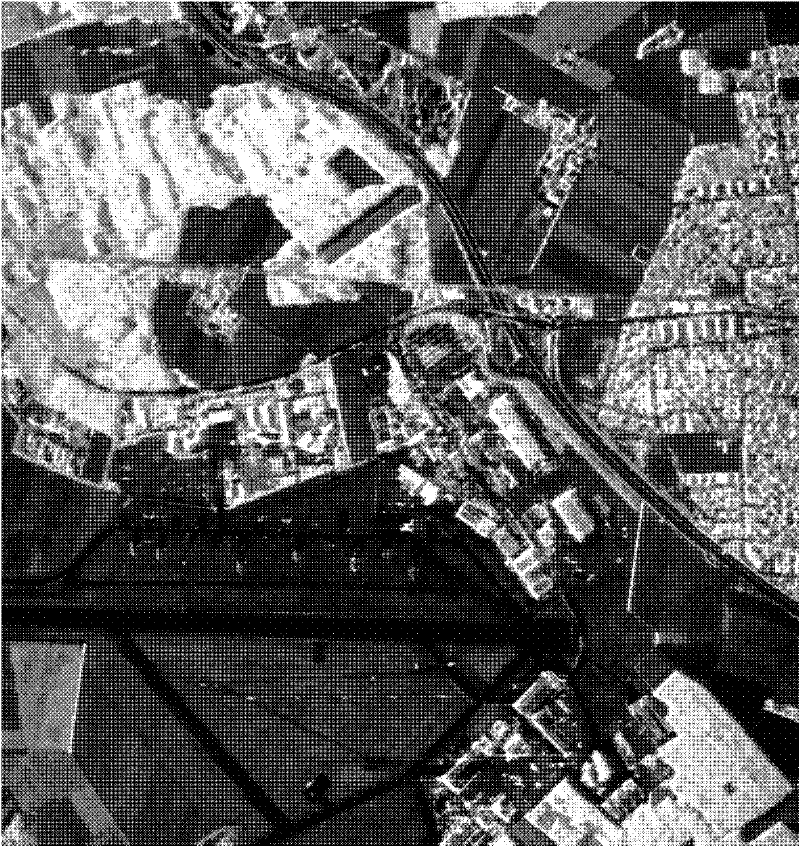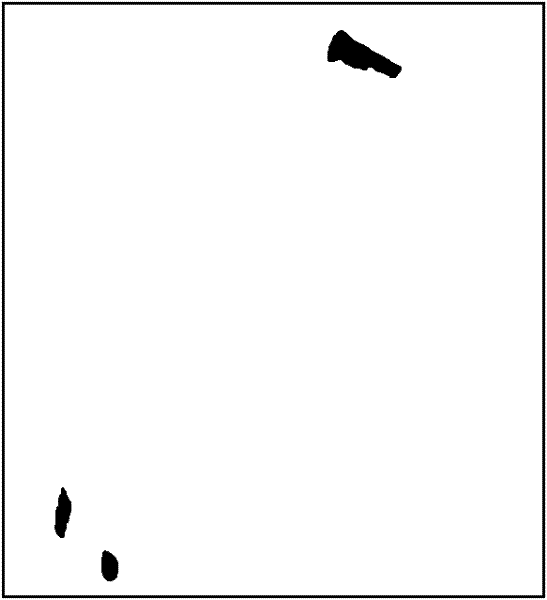Target detection method for polarimetric interferometry synthetic aperture radar on basis of eigenvalue analysis
A technique of interferometric synthetic aperture and eigenvalue analysis, which is applied in the field of remote sensing and can solve problems such as the inability to realize artificial target detection and recognition
- Summary
- Abstract
- Description
- Claims
- Application Information
AI Technical Summary
Problems solved by technology
Method used
Image
Examples
specific Embodiment approach 1
[0022] Specific embodiment one: the polarization interference synthetic aperture radar target detection method based on eigenvalue analysis of this embodiment, the method is realized by the following steps:
[0023] Step 1: Collect images through the polarization interference SAR system to obtain the image data to be processed, and read in the data of the polarization interference SAR image according to the image data format (hh channel image such as figure 1 shown);
[0024] Step 2: Image preprocessing: filter and register the polarimetric interferometric SAR image read in step 1 to obtain the polarization scattering vector;
[0025] Step 3: Calculate the eigenvalues and Jordan canonical form of the simplified polarization interference coherence matrix according to the polarization scattering vector obtained in step 2 (see "Matrix Analysis Tutorial", page 68, edited by Dong Zengfu, Harbin Institute of Technology Press, April 2005, second version), calculate the coherence c...
specific Embodiment approach 2
[0037] Specific embodiment two: In step three B of this embodiment, the eigenvalue decomposition of the simplified polarization interference coherence matrix is performed, and similar diagonalization is performed to obtain the eigenvalue and the optimized coherence coefficient based on the eigenvalue, the specific eigenvalue, optimization The process of coherence coefficient calculation and matrix similar diagonalization technology is as follows:
[0038] The eigenvalues of a matrix can fully and accurately characterize the characteristics of the matrix, which is an important means and tool for matrix analysis. Therefore, solving the eigenvalues of the simplified polarization interference coherence matrix is used for the extraction and analysis of ground features based on the simplified polarization interference coherence matrix; The simplified polarization interference coherence matrix is a 3×3 complex matrix, and its three complex eigenvalues and corresponding thr...
specific Embodiment approach 3
[0059] Specific embodiment three: in the step three C of the present embodiment, according to the eigenvalues obtained in the step three B and the optimized coherence coefficients, the statistical properties of the eigenvalues and the coherence coefficients of the selected three different surface object samples are analyzed as follows:
[0060] The characteristic values of the above three different ground object samples are used as coordinates to form a feature space or plane, and the distribution of the above three different ground object sample points in the feature space or plane is counted, and the distribution of the above three samples in the feature space or plane is analyzed. Separability, statistically draw three coherence coefficient distribution probability density maps of three different ground object samples respectively, analyze the difference of the three samples on the coherence coefficient probability density map through the three coherence coefficient dis...
PUM
 Login to View More
Login to View More Abstract
Description
Claims
Application Information
 Login to View More
Login to View More - R&D
- Intellectual Property
- Life Sciences
- Materials
- Tech Scout
- Unparalleled Data Quality
- Higher Quality Content
- 60% Fewer Hallucinations
Browse by: Latest US Patents, China's latest patents, Technical Efficacy Thesaurus, Application Domain, Technology Topic, Popular Technical Reports.
© 2025 PatSnap. All rights reserved.Legal|Privacy policy|Modern Slavery Act Transparency Statement|Sitemap|About US| Contact US: help@patsnap.com



